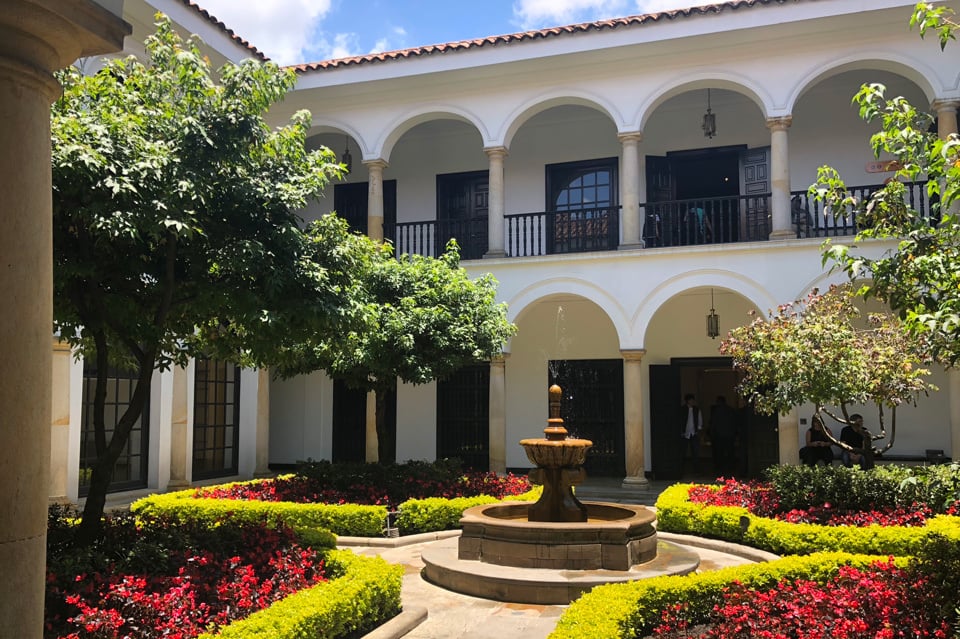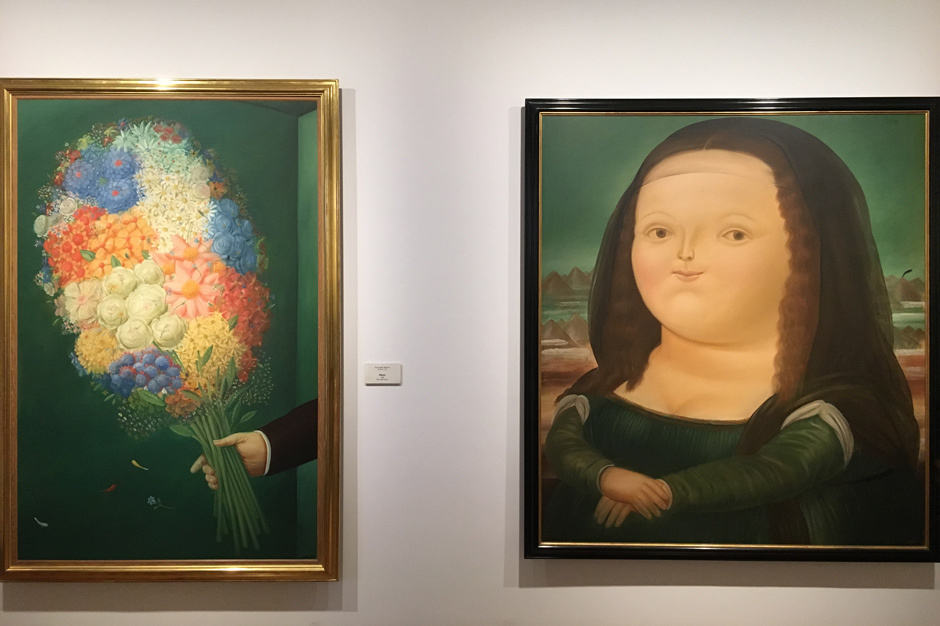Join/
Travel Spotlight
Essential Bogota: A 3-Day Itinerary
Day 1: Explore historic Bogotá and its major sites.
To get a good grounding in the history of Colombia, begin your day with a visit to the colonial district La Candelaria, making stops at the Gold Museum, the Botero Museum and the Art Museum of the Central Bank.
La Candeleria is the colonial area of Bogotá that encompasses the square where Bogotá was founded and the city’s largest plaza, Plaza de Bolivar. Its terracotta-tiled colonial houses and cobblestone streets provide a glimpse of the city’s historic charm. Among the most important sites in the area are the Gold Museum and Botero Museum.
Bogotá’s Gold Museum contains 34,000 gold pieces, as well as pottery, textile and bone artifacts from 13 different pre-Hispanic societies. Displays reveal the various metal working methods used by the tribes and important jewelry and tools, which highlight their customs and beliefs.
The Botero Museum, which is housed in a lovely colonial building, was established in 2008 around the works of Colombia’s most famous 20th-century painter Fernando Botero. The artist donated many of his great works as well as his art collection, which includes masterpieces by Picasso, Klimt, Giacometti and many Impressionists such as Degas and Bonnard. The terms of his gift were that entry to the museum would always be free. Among the paintings to look out for is the only self-portrait of the artist, which is an ode to Velázquez and the room of Botero miniatures.
[caption id="" align="alignnone" width="620"]
Next door to the Botero Museum is the Art Museum of the Central Bank, which formerly occupied the space that is now the Botero Museum. This collection dates to 1957 when Colombia’s central bank declared that it would “protect and spread the history of Colombian art.” The permanent collection ranges from the colonial period to contemporary Colombian artists, and a visit here provides a great overview of European influences and Latin American innovation in art.
Have lunch at La Bruja, or “the witch,” a funky, two-story restaurant in the Candeleria neighborhood, with eclectic charm and delicious food.
After lunch, if you want a literal overview of the city, head up to the top of Monserrate or Guadalupe hills, the two iconic hills that watch over Bogotá. Monserrate, which sits at 3,152 meters above sea level, is the more famous one, with its historic monastery, which is reached by a hike, funicular or tram. However, since it draws many crowds, the wait for the tram can be more than an hour and the hiking trail can be quite crowded. We suggest, instead, driving to the top of its twin hill, Guadalupe, where there is a giant statue of the Virgin Mary and equally wonderful views. The spot was considered a sacred site by the Muisca people.
Related: 5 Travel Tips on Navigating Colombia
[caption id="" align="alignnone" width="620"]
Day 2: Explore modern Bogotá.
Start with a visit to the famous fruit and flower market, Paloquemao. Go with one of our local guides who can explain the culinary customs of the region, point out the many exotic fruits from the Amazonian rainforest and introduce you to distinctive dishes and the stories behind them. Different stands are famous for ingredients and recipes, so whether you go for a meal or a snack or to buy ingredients for a cooking class that we can arrange, it is worth trying Colombian specialties that range from exotic fruit drinks and sweet waffle desserts to empanadas. If you visit on a Sunday, don’t miss the mass that takes place in one section, so families can combine their Sunday lunch shopping with a religious service.
Bogotá consists of many neighborhoods from the colonial La Candeleria to the wealthy residential districts and emerging shopping and restaurant zones. Depending on your interests, you can explore with an art curator who will introduce you to the galleries and dealers who specialize in South American contemporary art or to the vibrant street art scene and some of the artists and cooperatives behind it. We can also arrange for a biking, walking or shopping tour for those who want to meet local designers and to discover the craftsmanship of the city.
For a special Colombian night, head 45 minutes out of town to Andres Carne de Res in Chia. This sprawling spot (11 dining rooms) is similar to a massive block party or circus tent with incredible grilled meats, picnic tables full of revelers, rollicking live music and even actors who surprise and delight. It has grown from a roadside grill in 1982 to a world-known party spot that hosts celebrities, dignitaries and hundreds of locals. Reservations are a must every night, but Saturdays are the most popular. There is an outpost in town, but this is the real party.
Related: Bogotá 101
Day 3: Beyond Bogotá: Colombia’s Greatest Attraction
The most visited tourist attraction in Colombia and the largest salt cathedral in the world is an easy day trip from Bogotá. The Salt Cathedral in Zipaquira, which is considered one of Colombia’s greatest treasures, has its origins in salt mines established by the Spanish in the 17th century. The miners would make altars to the Lady of the Mines at the bottom of the pits and offer her flowers. Today, the Salt Cathedral is a functioning Roman Catholic church 200 meters underground, inside a mountain. Tunnels lead into a series of 14 stations of the cross (mini chapels) and eventually the main cathedral, with marble floors, altars, pews and a 33-foot dome. Statues and crosses are carved of stone and the main cathedral can host as many as 3,000 people for mass. We suggest not visiting during a holy week or major Catholic holiday, because the crowds can be massive; additionally, this is an excursion for people who have no trouble walking for an hour or so and are not claustrophobic. The length of the visit is between an hour or longer. Children may want to sign up for the immersive miner’s experience.
For your last dinner in town, try excellent Japanese food at Osaka, Peruvian fare at Rafael or Italian at Café Amarti. They are among the top restaurants in the city, and especially popular for family celebrations. If you want something more laid-back, Siete Gabras and Abasto are just a few blocks from the Four Seasons Casa Medina.
Related: A Taste of Bogotá
Contact Indagare for assistance planning a trip to Colombia. Our dedicated trip designers can match you with the destinations and properties that are best for you.
Published onJuly 17, 2018
Plan Your Trip With Us
We only feature hotels that we can vouch for first-hand. At many of them, Indagare members receive special amenities.
Get In Touch


